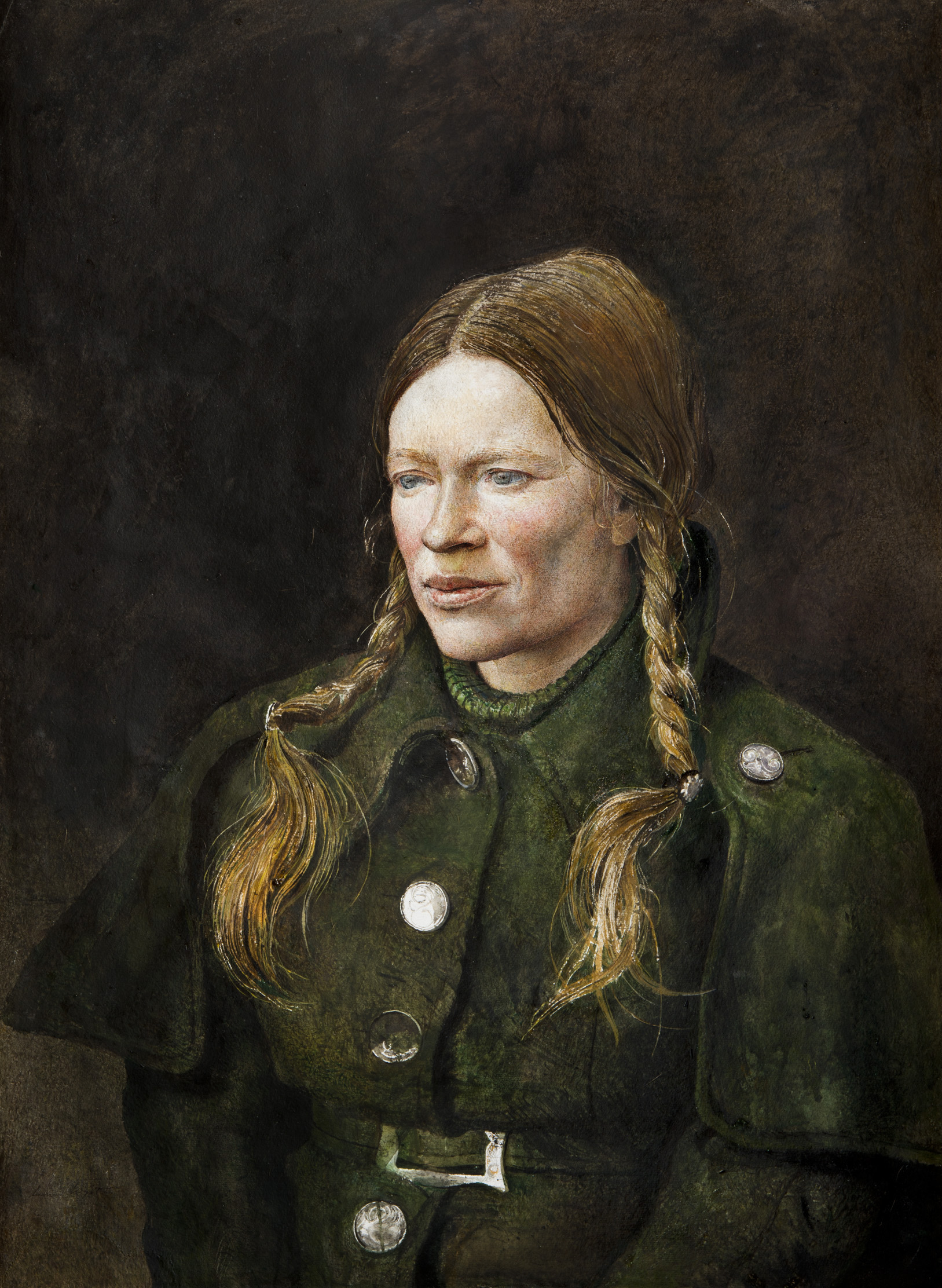Andrew Wyeth
One of best-known American artists of the twentieth century, Andrew Wyeth, was born in a small Pennsylvania town, the youngest of five children in a family of artists. His father Newell Convers (N. C.) Wyeth, a celebrated painter and illustrator, would become his teacher and mentor. When Wyeth was only twenty, his father arranged for an exhibition of his watercolors at the Macbeth Gallery, New York, which was an immediate success. In the early 1930s, Wyeth saw an exhibition of Winslow Homer’s watercolors that prompted him to paint the fleeting effects of light and movement. In the 1940s, Wyeth was introduced to the medium of egg tempera, which he used for his painstaking and deliberate technique for his paintings. Wyeth’s images are rooted, both emotionally and physically, in the two remote towns he divided his time between—Chadds Ford, Pennsylvania, where he was born in 1917; and Cushing, Maine, where he spent his summers. His most compelling and poignant images are of neighbors and friends, many of whom never ventured outside their small-town existence.
Wyeth’s The Prussian (1973) is a major drybrush from his Helga series. Beginning in 1971 and executed over a fifteen-year period, this series of more than 240 works focuses on Helga Testorf, a neighbor of Wyeth’s in his hometown of Chadds Ford. Wyeth sold nearly the entire group, subsequently exhibited as The Helga Pictures, to Leonard Andrews in 1986. That year, the National Gallery of Art organized an exhibition of the series, which traveled the United States from 1987-1989. Andrews subsequently sold the collection to a Japanese buyer in 1989. In 2005, the works returned to the U.S. market and have since been dispersed to numerous museum and private collections.
In the eerie yet beautiful painting, The Prussian, Wyeth paints the then forty-one year old Helga with ghostly ice blue eyes as she stares off emotionlessly into space, making no contact with the viewer. Wyeth painted several of the Helga pictures in his highly finished drybrush technique. Drybrush is a painting technique in which the artist uses a relatively dry paintbrush to load his paint, using just enough water or oil to hold a thick amount of paint. This technique creates a distinctive abraded surface that gives the work both literal and metaphorical depth.
What makes this series so important is that it tracked the physical aging process of Helga and the artistic growth of Wyeth. Wyeth painted a very similar composition to The Prussian six years later, entitled Braids (1979). Wyeth captured the aging process in the two paintings by posing Helga in a similar way in this later painting and including her graying hair, drooping facial features, and wrinkles. Wyeth created this body of work without telling a single person; even Wyeth’s wife and Helga’s husband were unaware of the relationship. Once the story broke, rumors immediately surfaced that the two were having an affair. Helga was featured on the cover of Time magazine in 1986, revealing the scandal to the public.
Wyeth received many official honors during his career. In 1963, he became the first visual artist to be nominated for the Presidential Medal of Freedom and in 1990, he was the first artist to be awarded the Congressional Gold Medal. In 2009, Wyeth passed away in his hometown of Chadds Ford.
Andrew Wyeth
The Prussian, 1973
Drybrush on paper
29 1/2 x 21 3/4 inches
Signed lower left

